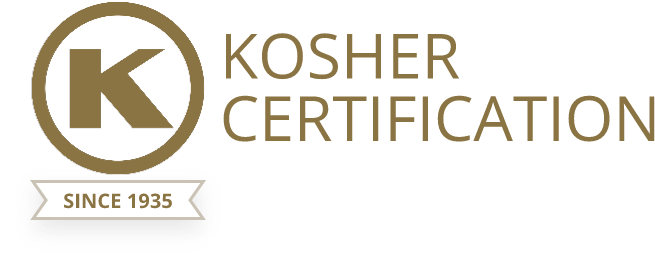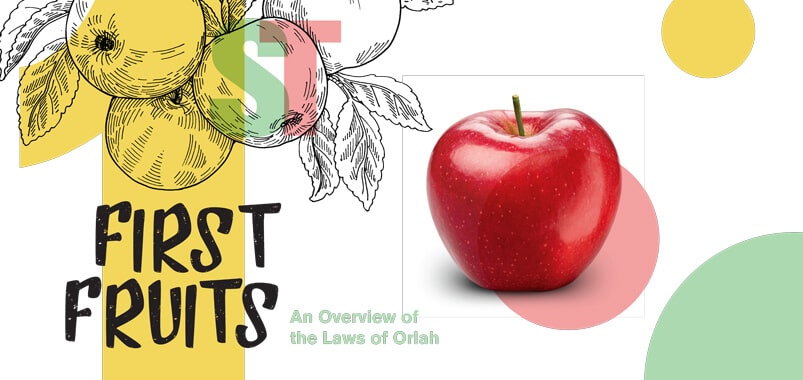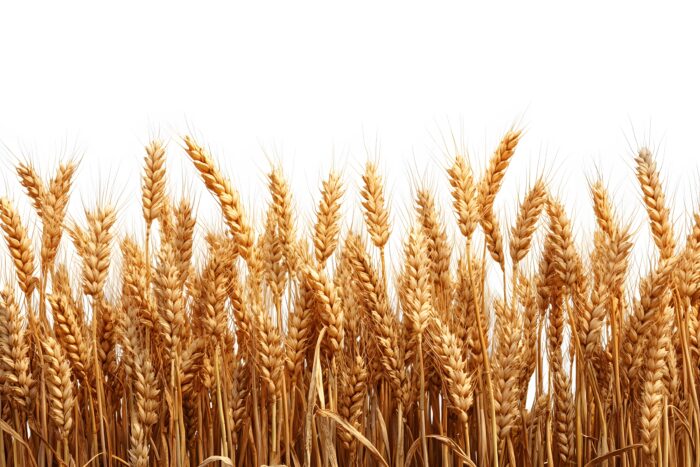It’s Erev Rosh Hashanah and the table is set beautifully, with the tray of apples and honey prominently in the center. Of course, everyone has their personal favorite type of apple – the Gala, the Honey Crisp, the famous Red Delicious… But, there is a new variety of apple on the market that has taken the United States by storm with its instant popularity. The Cosmic Crisp (scientific name WA-38) is an apple with dark red skin, like the color of wine, creamy white flesh, a pleasant flavor and an extended shelf life. It is so dense that the apple feels heavy when held.
Like all apples, the Cosmic Crisp consumes oxygen through what the consumer might think of as spots or freckles, but which are really tiny pores in the skin, called lenticels. The Cosmic Crisp apple’s lenticels look exceptionally bright against its inky skin, reminiscent of stars in the night sky, an observation that was branded into the trademarked “Cosmic Crisp” name.
The apple tested so well that Washington State University (where the variety was developed), in collaboration with commercial nurseries, began producing apple saplings as fast as possible; the plan was to start with 300,000 trees, but growers requested 4 million, leading to a lottery for divvying up the first available trees. Within three years, the industry had planted 13 million Cosmic Crisp trees.
The variety was first planted for commercial use in Spring 2017, with 12 million trees
pre-ordered by Washington orchards. Cosmic Crisp apple trees were initially only available to Washington-based growers, and will remain limited to them for at least ten years.
Proprietary Variety Management expects that the number of Cosmic Crisp apples on the market will grow by millions of boxes every year, outpacing Pink Lady and Honey Crisp within about five years of its launch. Though Washington State University owns the WA-38 patent, the breeding program has received funding from the apple industry, so it was agreed, over some objections by people who worried that quality would be diluted, that the variety should be exclusively available to Washington growers.
As with any new variety of fruit, the Cosmic Crisp apples raise a question among kosher consumers. Is there a concern of orlah with these fruits which were all grown (fairly) recently? As mentioned, the trees only became available to growers in Spring 2017, so should we concern ourselves with the possibility of orlah?
The Source of Orlah
The Torah tells us: וכי תבאו אל הארץ…אני ה’ אלקיכם1
Once the Jewish people came to the Land of Israel, all fruits grown on newly planted trees could not be consumed, sold, gifted, or used for any form of pleasure for the first three years. At the conclusion of the third year, the fruits are considered holy and can only be consumed in Yerushalayim. Only at the beginning of the fifth year are the fruits considered “mundane” and can be sold and consumed in a regular manner.
The Torah only speaks explicitly about fruits that grow in the Land of Israel, but the prohibition against orlah fruits includes those which grow outside of Eretz Yisroel2 , as well. The source of this prohibition isn’t learned plainly from the Torah, rather it’s a law passed down from generation to generation beginning with Moshe Rabbeinu – Halacha l’Moshe miSinai3.
Generally, Halacha l’Moshe miSinai has the same power as any law from the Torah itself, but in this case there is a leniency, which usually only exists with laws of rabbinic origin. If there is a doubt about the orlah status of a fruit grown outside of Eretz Yisroel, it is allowed as long as it’s not clearly from the forbidden tree4.
The Beis Yosef and the Rem”a have differing opinions about the harvesting of fruit in doubt. The Beis Yosef permits one to even collect the fruit himself, while the Rem”a permits one to observe Gentiles collecting the fruit.5
The leniency towards fruit grown outside of Eretz Yisroel is so great that even if there is a good chance that the fruit is orlah, or even if it’s a “phone call away” to find out the truth of the matter, the fruit is still kosher6. In Eretz Yisroel the fruit is forbidden until proven kosher, but outside of Eretz Yisroel, it’s permitted unless proven non-kosher.
Timing it Right
The permissibility of fruit depends on the tree reaching the age of 3 years old (beginning the 4th year), so timing the planting is very important. The Halacha is, that as long as the tree was planted at least 44 days before Rosh Hashanah (before 16 Av), the first partial year can be counted as a full year. This calculation is based on the principle that it takes 14 days for the tree to settle into its current location plus another 30 days, as in other halachic cases where 30 days can be considered a year for the planting of trees.
Regardless of the planting date, the fourth year cannot start before Tu B’Shvat, because the growth started before the end of the third year. So, with correct planning, it takes a minimum of 2 years and 44 days, plus the four and a half months from Tishrei to Tu B’Shvat to complete the three-year orlah prohibition. If the trees were planted after 16 Av the fruits are forbidden for 3 full years, plus the four and half months until Tu B’Shvat.
What is Included in the Prohibition?
The laws of orlah apply to fruits grown by both Jews and Gentiles.7 The entire fruit, including the skin, seeds and flower, is included in the prohibition and one cannot derive any pleasure or benefit from the fruit or tree. One cannot remove the seeds to plant them, or even ask a Gentile to take the seeds, since this would cause the Jew to gain favor from the Gentile. This particular law only applies to fruits which grow in the Land of Israel and not to fruits grown outside of it8. Outside of Eretz Yisroel, only the fruit itself is forbidden.9
If seeds from an orlah fruit were mistakenly planted, then b’di’eved the tree is “kosher” once three years have passed, because of a factor called “גורם זהוזה” (which means that the soil which isn’t forbidden) has played a key role in producing this fruit.10
Preemptive Measures
Though orlah fruits cannot be used in any way, one is allowed to sell the fruits to a Gentile ahead of time (before they have sprouted), because there is no prohibition against orlah fruits when the fruits do not yet exist.11
If a Jew and Gentile are partners, the Jew may not take triple his share of the fruit after the three years to make up for the three years that he could not partake in the harvest unless he planned this with his Gentile partner in advance. According to the Beis Yosef, the partners need to make a proper legal agreement in advance, but according to the Rem”a if the Jew merely tells the Gentile the plan it is sufficient.12
What Types of Trees Are Included?
The count of three years does not necessarily begin when the tree is still a seed, rather the count begins once the tree is planted in the ground.13 The tree could be fully grown, but if it was replanted after being completely detached from the ground the three year count begins anew.14
•If enough soil was left on the roots for it to survive for three years15 (in Eretz Yisroel) or for even a few days outside of Eretz Yisroel16, one does not need to observe the laws of orlah once the tree is replanted.
• If the tree was planted for its wood (not for its fruits), or to be used as a fence or barrier, the laws of orlah do not apply. This is contingent upon the intention
being evident (for example: the trees are grown too close to grow in a proper manner to yield good fruits).17
• If a tree was planted with a dual intention, to use one side for fruits and the other side as a fence (and the intention was evident), the fruits from the side that was meant for food are forbidden for the first three years, while the rest are permitted as long they are eaten at random (and not intentionally harvested).18
A wild tree that grew on its own in a harsh land is not subject to the laws of orlah. It should be clearly evident that the tree was not cultivated or tended.19
The Fruits of the Fourth Year נטע רבעי20
As mentioned before, the fruit of the fourth year have a special status as well and can only be consumed in Yerushalayim. Since this is no longer practical, the fruit of the fourth year must be redeemed21 with at least a prutah22 (which is worth a small amount of money today) or fruit of that value. The holiness of the fourth year crop is then transferred to the money or the fruit which is being exchanged. The money or fruit must be destroyed or thrown away in a manner that it
will not be found.
There are three opinions about the application of the law of the fourth year outside of Eretz Yisroel:23
Rabbeinu Yonah holds that the law is the same outside of Eretz Yisroel.
The Rambam holds that the law does not apply outside of Eretz Yisroel.
The Rosh, Tur, Ramban, Tosfos and many more hold that generally the law does not apply, unless it is a grape, which has a special significance.24
The Gr”a holds that the Halacha is like the third opinion. When redeeming these fruits one must say a brocha, but when grown outside of Eretz Yisroel, the Shach says that one should make a brocha without shem u’malchus.
If the fruit belongs to a Gentile, the Rambam25 holds that the fruits are only holy if the Gentile wants them to be holy; otherwise, they may be consumed in the usual manner.26
Is the Cosmic Crisp Kosher?
The answer is, “Ess gezunterheit!”
The Cosmic Crisp saplings are prepared in the nurseries in a special way. The trees are grown in pots for at least two years, cooled, and then replanted later on. A significant amount of dirt is left attached to the roots and these saplings are usually dug up in January and then replanted in May, which eliminates the need to count the orlah years from when the trees are replanted.
Even though there is a chance that the fruit is orlah, there is also a chance that it’s not orlah. If the fruit was grown in Eretz Yisroel, there would be an issue of orlah, but because we are in Chutz L’Aretz (outside of Eretz Yisroel), even the slightest doubt of the orlah status makes this fruit halachically acceptable.
1 כג.יט ויקרא
שו“ע יו“ד סימן רצ“ד סעיף ח 2
קידושין ד‘ לט 3
שם 4
ש“ך יו“ד שם ס“ק כא 5
פתחי תשובה יו“ד שם ס“ק יג 6
שו“ע יו“ד סימן רצ“ד סעיף ח 7
שו“ע שם סעיף ג‘ 8
ט«ז ע«א 9
שם סעיף י“ב 10
שם סעיף ט“ו 11
שם סעיף י“ג וראה נקודות הכסף על ט“ז ס“ק כ“ג 12
13 שם סעיף א‘ וסעיף ט“ז
שם סעיף י“ט 14
15 Or fourteen days according to some
Poskim.
פתחי תשובה שם 16
שם סעיף כ“ג 17
שם ודרך אמונה ברמב“ם פ“י ע“א 18
19 שם סעיף כ“ז
מס‘ פרה פ“א משנה א‘ 20
שו“ע שם סעיף ו‘ 21
ראה גר“א שם ס“ק כ“א 22
שו“ע שם סעיף ז‘ 23
ט“ז שם ס“ק י“ב 24


 EN
EN  ZH
ZH  KR
KR  BR
BR  ES
ES  IN
IN  IL
IL 




